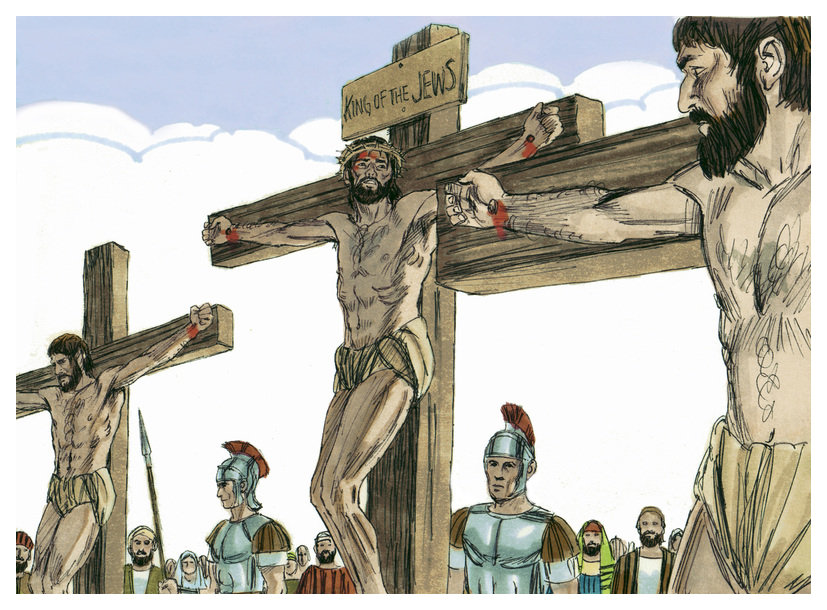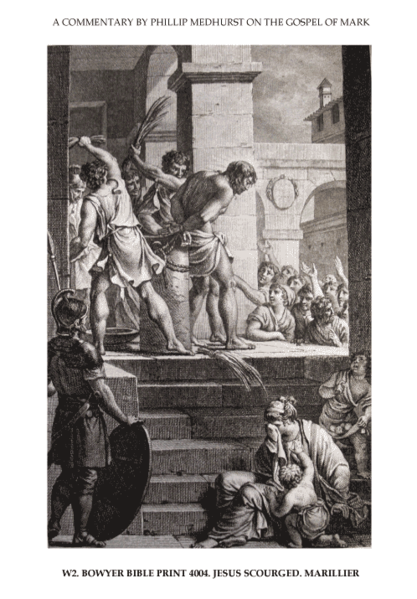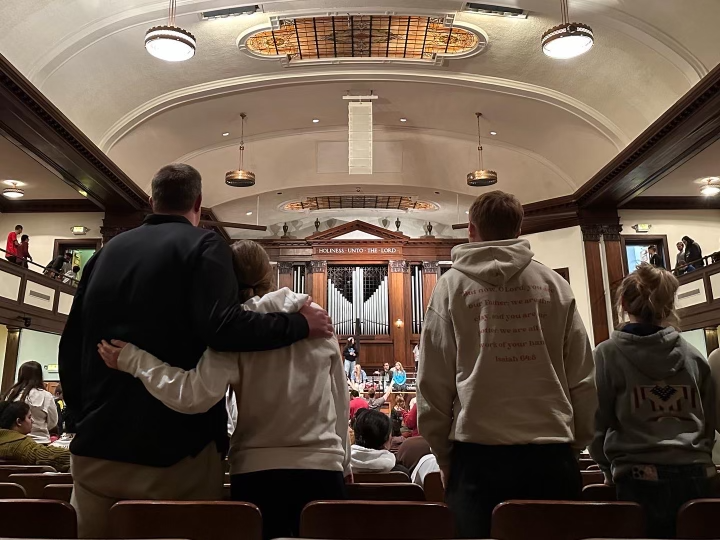The Bible uses several titles in referring to Jesus. The most prominent is ‘Christ’, but it also uses ‘Son of God‘ and ‘Lamb of God‘ regularly. However, Jesus often refers to himself as ‘Son of Man’. What does this mean and why does he use this term? It is in the trial of Jesus that the irony of his use of ‘Son of Man’ really stands out. We explore this here.
Many are somewhat familiar with the trial of Jesus. Perhaps they have seen the trial depicted in a film or read it in one of the gospel accounts. Yet the trial that the Gospels record brings forth profound paradoxes. It forms part of the events of Day 6 in Passion Week. Luke records the details of the trial for us.

Popular Graphic Arts, PD-US-expired, via Wikimedia Commons
At daybreak the council of the elders of the people, both the chief priests and teachers of the law, met together, and Jesus was led before them. “If you are the Christ”, they said, “tell us.”
Jesus answered, “If I tell you, you will not believe me, and if I asked you, you would not answer. But from now on, the Son of Man will be seated at the right hand of the mighty God.”
They all asked, “Are you then the Son of God?” He replied, “You are right in saying I am.”
Then they said, “Why do we need any more testimony? We have heard it from his own lips.”
Luke 22: 66-71
Notice how Jesus does not answer their question whether he is the ‘Christ’. Instead, he refers to something totally different, the ‘Son of Man’. But his accusers don’t seem puzzled by that abrupt change of topic. For some reason they understand him even though he does not answer if he was the Christ.
So why? Where does ‘Son of Man’ come from and what does it mean?
The ‘Son of Man’ from Daniel
‘Son of man’ comes from Daniel in the Old Testament. He recorded a vision explicitly about the future, and in it he references a ‘Son of Man’. Here is how Daniel recorded his vision:

“As I looked,
“thrones were set in place,
Daniel 7:9-10
and the Ancient of Days took his seat.
His clothing was as white as snow;
the hair of his head was white like wool.
His throne was flaming with fire,
and its wheels were all ablaze.
10 A river of fire was flowing,
coming out from before him.
Thousands upon thousands attended him;
ten thousand times ten thousand stood before him.
The court was seated,
and the books were opened….
13 “In my vision at night I looked, and there before me was one like a son of man, coming with the clouds of heaven. He approached the Ancient of Days and was led into his presence. 14 He was given authority, glory and sovereign power; all nations and peoples of every language worshiped him. His dominion is an everlasting dominion that will not pass away, and his kingdom is one that will never be destroyed.
Daniel 7:13-14
vs. Son of Man at Jesus’ Trial

Now reflect on the irony of the situation at Jesus’ trial. There stood Jesus, a peasant carpenter living in the backwater of the Roman Empire. He had a ragtag following of lowly fishermen. At his recent arrest, they had just deserted him in terror. Now he is on trial for his life. By calling himself the Son of Man he calmly claimed before the chief priests and other accusers to be that person in Daniel’s vision.
But Daniel described the son of man as ‘coming on the clouds of heaven’. Daniel foresaw the Son of Man taking worldwide authority and establishing a never-ending kingdom. That could not be more different from the actual situation that Jesus found himself in at his trial. It would seem almost ludicrous to bring up that title with him being in that situation.
What was Luke thinking?
Jesus is not the only one behaving strangely. Luke does not shy away from recording this claim and putting it on record. However, when he did so (early 60s first century CE) the prospects for Jesus and his fledgling movement seemed laughable. His movement was ridiculed by the elite, disdained by the Jews, and ruthlessly persecuted by the insane Roman Emperor Nero. Nero had the Apostle Peter crucified upside-down and Paul beheaded. It should seem beyond sane reason that Luke would keep that fantastic reference in the mouth of Jesus. By writing it down he made it public for all their detractors to scoff at. But Luke was confident that Jesus of Nazareth was this same Son of Man from Daniel’s vision. So, against all odds, he records Jesus’ irrational (if it were not true) exchange with his accusers.

‘Son of Man’ – being fulfilled in our time
Now consider this. Only after Jesus gave his reply, and centuries after Luke put it on record, some significant parts of the Daniel Son of Man vision have been fulfilled by Jesus. Daniel’s vision of the Son of Man stated that:
“all peoples, nations, and men of every language worshiped him”.
That was not true of Jesus two thousand years ago. But look around now. People from every nation and practically each of the thousands of languages do worship him today. This includes former animists from the Amazon to Papua New Guinea, the jungles of India to Cambodia. From East to West and North to South people worship him now on a global scale. For no one else in all of recorded history is this even remotely plausible. One may dismiss this with a ‘yes well that is due to the spread of Christianity’. Sure, hindsight is 20-20. But Luke had no human way of knowing how things would unfold in the centuries after he recorded his account.
How could the Son of Man get worship
And worship, to be real worship, can only be given by a free will, not under coercion or by bribery. Suppose Jesus was the Son of Man with the powers of Heaven at his command. Then he would have had the might 2000 years ago to rule by force. But by force alone he would never have been able to get true worship out of people. For that to happen people must be freely won over, like a maiden by her lover.

Mollie Landman Hunker, CC BY-SA 4.0, via Wikimedia Commons
Thus to reach fulfillment Daniel’s vision required, in principle, a period of free and open invitation. A time when people could freely choose whether they would give the Son of Man worship or not. This explains the period we now live in, between the First Coming and the Return of the King. This is the period when the Kingdom’s invitation goes out. We can freely accept it or not.
The partial fulfillment of Daniel’s vision in our times provides a basis to trust that the remainder will also be fulfilled someday. At the very least it might raise our curiosity about the truth of the overall Biblical story.
In his first coming he came to defeat sin and death. He achieved this by dying himself and then rising. He now invites everyone thirsty for everlasting life to take it. When he returns as per Daniel’s vision he will fully establish the ever-lasting Kingdom with its ever-lasting citizens. And we can be part of it.